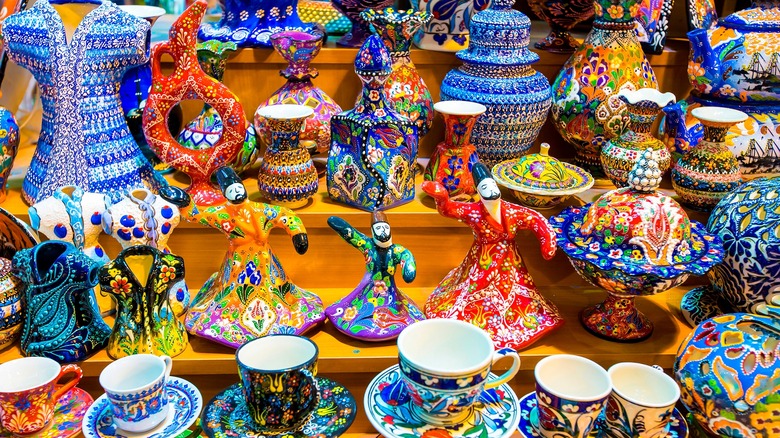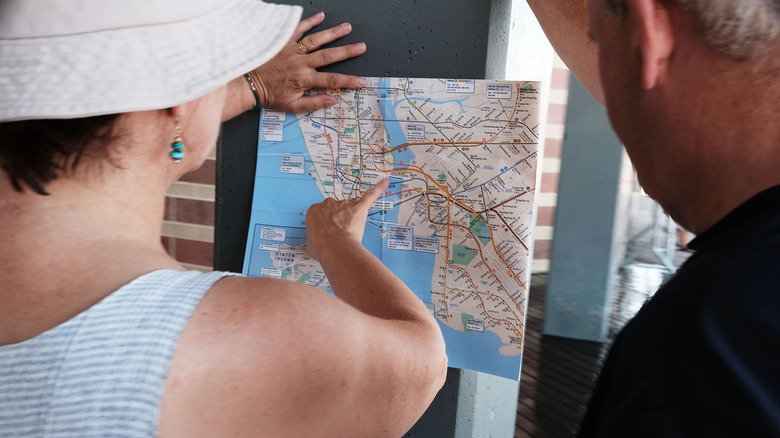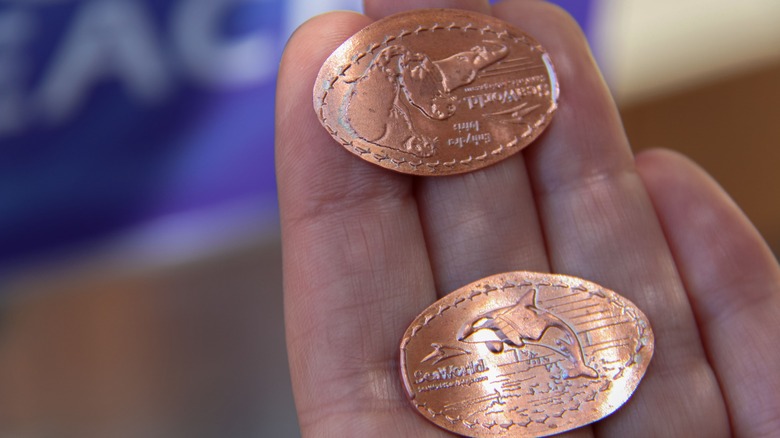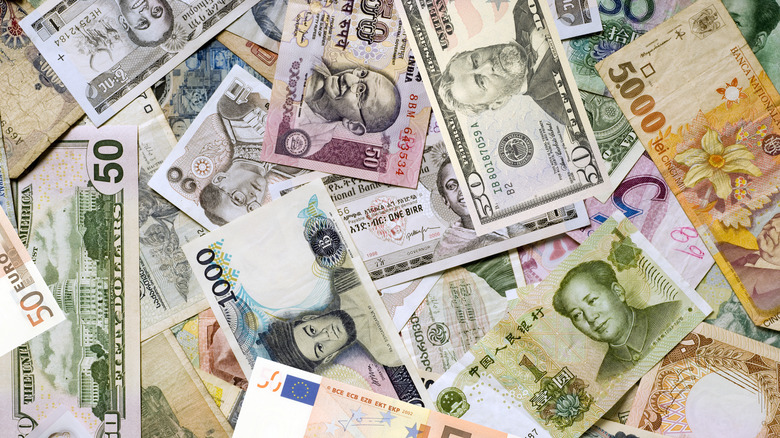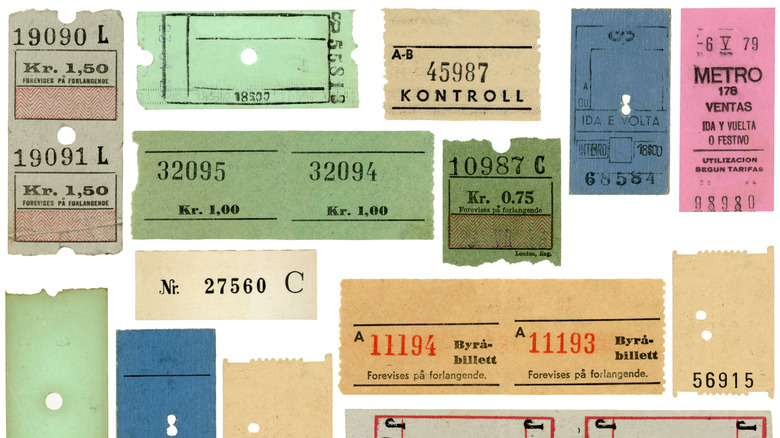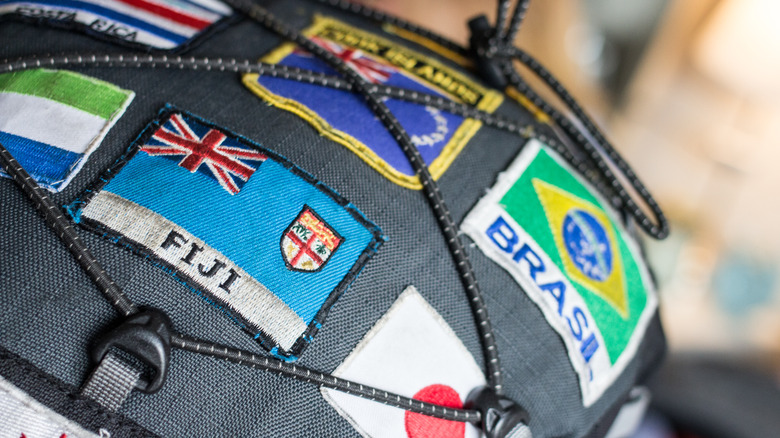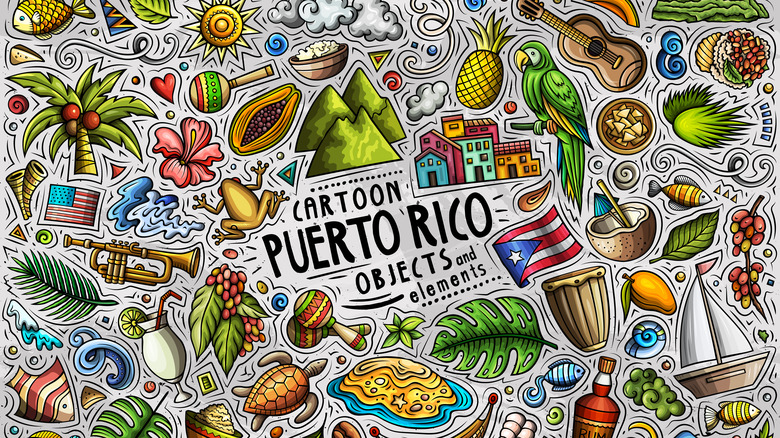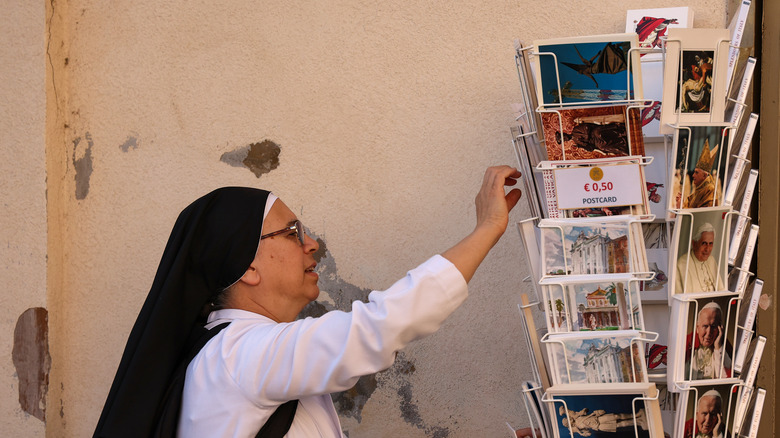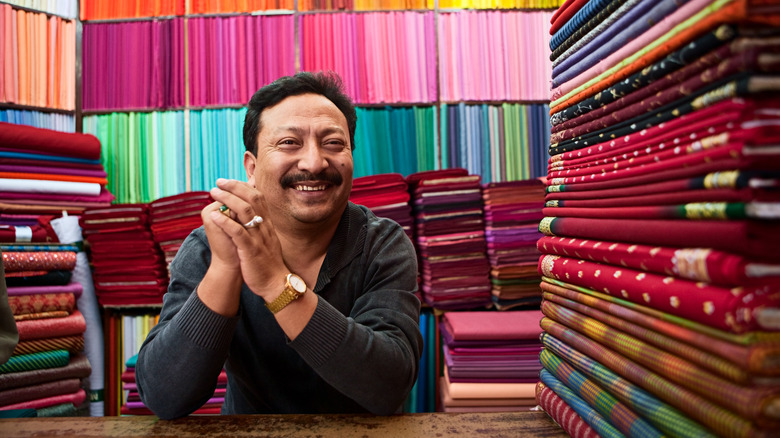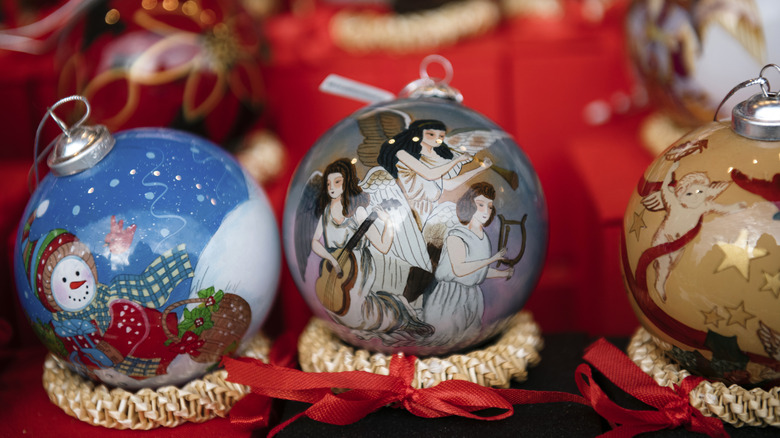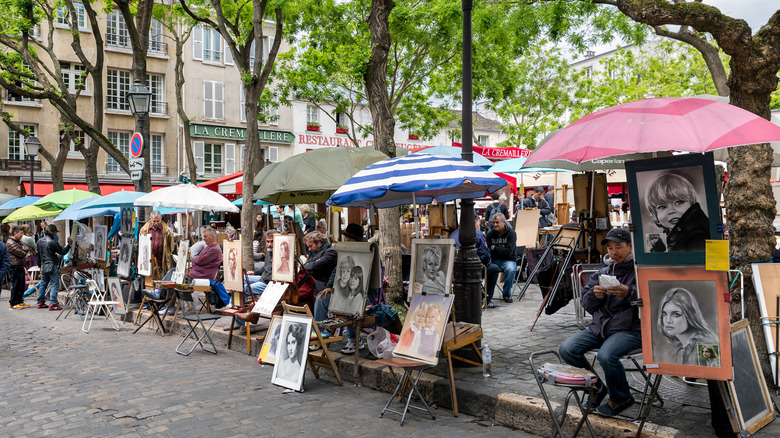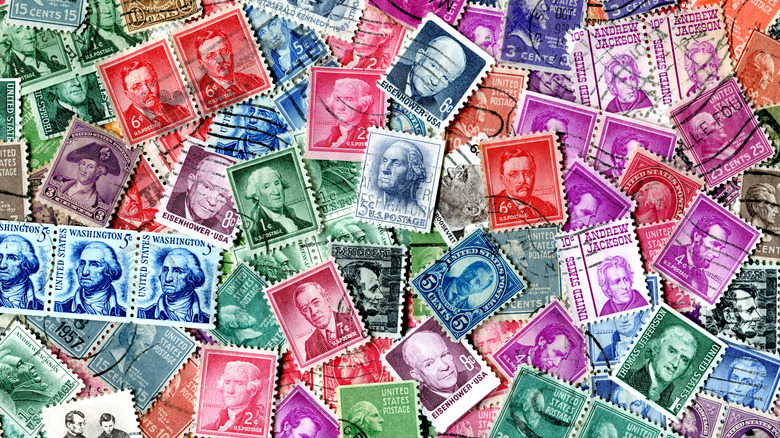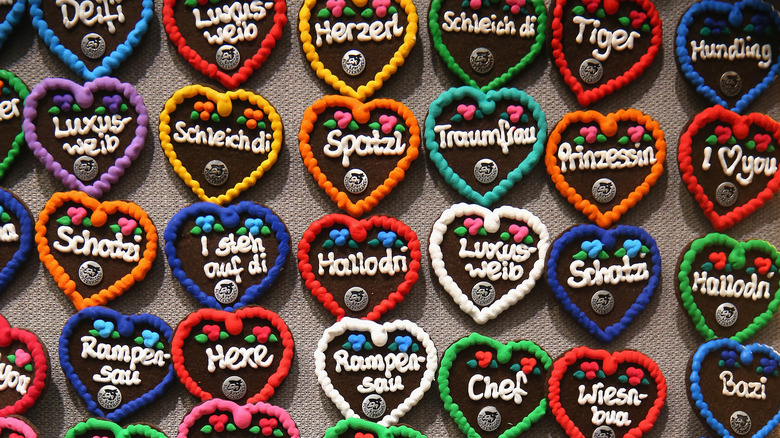Budget-Friendly Souvenir Ideas To Consider For Your Next Trip
Souvenirs are one of those things that we frequently worry we'll overpay for, pack too much to bring home, or break en route. Depending on their destination, the average traveler spends from $50 to $200 on souvenirs or other merchandise during their travels. Obviously, if you go somewhere like Walt Disney World, you're more likely to spend more on souvenirs from ships than on a camping trek around various National Parks.
While tchotchkes like souvenir spoons are out of fashion (although we are definitely still on Team Spoon Collector), travelers are becoming more creative in commemorating their adventures. Some of these options are more innovative than others, yet you shouldn't let your artistic prowess or lack thereof stop you from embracing more unique ways of remembering a vacation.
Phones full of thousands of photos don't do us any good if those photos just sit gathering digital dust. Better to pick up a souvenir, especially if doing so doesn't break the bank.
Guide maps
Framing guide maps is a terrific and inexpensive way to remember a special trip. These maps are usually free to pick up from the location or easily acquired from a truck stop or welcome area off the highway.
You can do all kinds of things with guide maps, from marking your route and framing that section in its entirety or cutting out photos and placing them in their designated areas on the map. Another thing you could do is punch a hole in the side of it and add it to your trip scrapbook. You can take out the routes you traveled and create pages of collages with the guide map pieces as well as photos of you in the different places along the route. This has long been a favorite way to memorialize a trip with world or country maps, so why not guide maps, too?
Consider grabbing two, just in case something goes wrong in your first draft, and remember to place them in your luggage in a way that will keep them flat. One way is by putting them in the padded laptop sleeve portion of a backpack or bringing some small pieces of cardboard to sandwich around the maps. Pick out a nice frame, and away you go.
Photo magnets
These are terrific because you can order them on a website like Vistaprint or Shutterfly when you get home from your trip. You can take the pictures and worry about ordering the magnets later — less baggage, anyone? Photo magnets are budget-friendly souvenirs suitable for yourself to remember the trip by or to send to loved ones too. These are exceptionally terrific souvenirs to commemorate special trips celebrating an engagement, honeymoon, babymoon, or baby announcement. They also make great holiday cards and save-the-dates.
How creative you get with the magnet will likely determine its cost — for example, prices on Shutterfly as of writing range from $6.38 to $14.99 each. Frequent discounts are floating around online for custom photo gift sites, and the magnets are usually cheaper if you buy several at a time rather than just one. Be sure you favorite or separate your best photos during the trip so it isn't so difficult to sift through them once you're home, although there is never a bad time to look through holiday photos.
Pressed pennies
Though these are increasingly rare, they still exist, especially in touristy places like Walt Disney World. How much they cost varies depending on where you find them, though generally, they run from $0.50 to $2. Obviously, it costs more than just the penny (many of these machines don't even accept change anymore, just cards), yet these are still some of the cheapest souvenirs you'll likely find.
These pressed souvenir pennies are versatile and can be placed in albums, picture frames, or even used for jewelry like a charm bracelet or necklace pendant. When you purchase these souvenirs from a machine, the pennies are more likely to be clean. If you want to bring your own and try pressing pennies at more traditional machines, leave time to clean them before your trip.
Cleaning them will make the impression more legible and is as easy as brushing them with a soft toothbrush under warm water or letting them soak in vinegar or lemon juice. This will make them shiny and new again.
Currency
This is a fun one because sometimes you'll have leftover money (whether coins or cash), and you can frame the notes or turn the coins into art or jewelry. Especially if you're going to places known for having some of the most beautiful currency on the planet, like the Maldives, the French Pacific Territories, or Sao Tome & Principe, the money can be a fantastic way to remember your trip.
It is generally recommended to avoid converting money at the airport because those locations usually charge higher fees. If you decide to pull money from an ATM, do so in the local currency. Whatever bank owns the ATM is more likely to give you a better conversion rate if you take out your cash in the local currency equivalency rather than U.S. dollars. Many places worldwide accept credit cards, yet having a bit of currency on hand is always a good idea, even in an increasingly cashless society. Not only does cash help in tight situations, but it also makes for a fantastic souvenir.
Ticket stubs
A lot of people, travelers or not, collect ticket stubs. Particularly for live entertainment, ticket stubs have long been a coveted souvenir across many communities. These stubs can extend to all kinds of paper paraphernalia you pick up throughout your travels, from paper boarding passes for air travel, train tickets, museum passes, or anything else you can think of. Put all these little paper goodies together in a picture frame with some of your holiday snaps, and you've got a gorgeous travel memento.
This is also a popular budget souvenir idea for Disney Parks visitors. While most parks worldwide no longer use paper ride passes or tickets, the cards work just as well. Plastic cards can be tacked or glued into shadow boxes or picture frames, along with other things like bracelets from holiday parties, lanyards from popcorn buckets, and even MagicBands. Ticket stubs don't have to have a strict definition.
For those who like to save their airline boarding passes, you may be dismayed that using digital passes has become the norm. However, you can still get a physical copy of your boarding passes at self-help kiosks around the airport or by asking a gate agent. You can also use your digital pass on your phone if you want to tuck the paper boarding pass away right away for safekeeping.
Patches
This cheap souvenir is an excellent idea if you're on a backpacking adventure. For example, if you're backpacking Europe, you can pick up a patch in every new country and adorn your backpack with it. That way, you can show where it's been — like decorating a hard shell suitcase or old steamer trunk. If you cannot find patches in specific locations (this writer can confirm that can be a challenge), grab one you like online and have it sent home.
You'll usually find them at souvenir shops or kiosks in most major cities you visit. For the most part, they range in price from $5 to $15 depending on the intricacy and design of the patch, where you are in the world, and what kind of store you find them in. Remember that if you pick them up at the airport, they'll probably be more expensive than at a random souvenir kiosk on the street.
Patches are another souvenir collectible suitable for things like picture frames or other means of wall decoration. Another good option is to get a corkboard and adorn it with patches, which can be pinned to the board independently or with appropriate photos from each destination. Clusters of photos around each patch are an excellent way to diversify the board. You could also purchase mini corkboards and dedicate each of them to an individual destination.
Stickers
In the same vein as the patches, collecting stickers is an easy and fun way to remember a trip. You can plaster them all over your suitcase, collect them in a book, or smack them on a water bottle. You can find stickers just about anywhere you go, including hyper-specific locations like coffee shops, boutiques, and museums you visit. You're far more likely to find stickers in places outside souvenir stores or airports than many other popular souvenir types.
Reusable sticker books are a great way to get into collecting stickers. That's because these books allow you to place, remove, and move the stickers as you go. You can organize the stickers into categories in the books and reorganize them whenever you want to, as not wanting to put a sticker on something for fear of changing your mind is a real conundrum for some folks. These reusable sticker books nip that worry in the bud.
Postcards
They're an old standby for a reason. Postcards are colorful, beautiful, and easy to turn into collages or other art you can enjoy in your home. If, for some reason, you struggle to find any while on the road, postcards can be purchased online and sent home. Sure, you won't collect the local postal stamp, but at least you'll have the postcard. Amazon will have the cheapest and best range of bulk postcard options, though you may want to check sites like Etsy, too.
Another way to make the postcards you collect in the locations more special is by writing down some memories from the destination, as you would if you were sending them to a friend. You can put them in a photo album to see both sides of the card and remember what made each location special. Postcard photo albums are a marvelous tradition, one that this writer was encouraged to begin by coworkers before leaving on their honeymoon. It's a tradition that can be suited to any place in the world and will help you collect souvenirs and memories.
Fabric
Fabric is another perfect inexpensive souvenir (depending on the kind of fabric you get) for a crafty traveler or one who loves to have clothing or other items made by artisans back home. Fabric goes into luggage as easily as a shirt or any clothing item and beautifully reflects where it's from, making it a budget-friendly and versatile way to remember a place.
Fabric prices will vary widely depending on where you go. In a place like Marrakech, where buying fabric is popular, prices range from $10 to $200 for different lengths of fabric. There are ways to be budget-conscious about buying fabric, even though you could easily break the bank with yards of silk. It is best to shop around for the best prices.
Larger pieces of fabric can be turned into a shirt, dress, or even something as simple as a scarf. You can take them to a sewist or clothier if you are worried about trying to make something yourself. One way to make something yourself is to attach the fabric to a small canvas or picture frame. It can be glued down, held, stretched, and stapled to the back. When you have several of these fabric pieces, you can make a wall quilt. Imagine what a wall of those fabric squares would look like — talk about a coat of many colors!
Recipes
The senses of taste and smell are so tightly bound to our memories that collecting recipes is an incredible way to instantly snap us back into a bygone memory. An easy way to collect them is to buy recipe cards in advance and have a way of organizing them once you're home. Bring the recipe cards with you on your trip, write down recipes along the way, and remember to mark where the recipe is coming from. You can ask Airbnb hosts, new friends, bakers, or even restauranteurs for specific recipes for dishes you love during your journey. You can include the city, country, and even the specific location, like a restaurant or bed and breakfast.
Not all folks will be willing to divulge their beloved recipes, so be prepared for declinations. You may also want to note any ingredients you'll need to acquire from specialty grocers when you get home. Asking for a recipe can be a little awkward, but it doesn't hurt to ask. The worst that will happen is they'll turn you down. The best that will happen is that you'll head home with your new favorite dishes to prepare for your loved ones.
Ornaments
Christmas ornaments make terrific budget-friendly souvenirs if you are lucky enough to be visiting a destination in the throes of festive fever. Some folks even dedicate an entire Christmas tree to their worldly adventures. Consider starting your collection with one ornament per location or major city. You don't want to get carried away right off the bat, and starting with one per place also leaves plenty of room on your tree for more ornaments from future adventures.
Small stuffed animals, unique pins, jewelry, or small wooden objects can also be fashioned into charming ornaments. This writer found some lovely, budget-friendly wooden animal cut-outs at a London Christmas market and purchased a hedgehog in honor of a former pet. The little cut-out was about $11, with other larger ones going up to around $50. All it took was a little glue and ribbon on the back to make a small wooden shelf stander into a one-of-a-kind tree ornament.
Street art
In cities like Paris or New Orleans, artists are selling their work along the sidewalks everywhere you look. Often, you can get an inexpensive work of art, and since those cheaper pieces are usually small, it's easy to haul them around. They are usually on a stiffer paper board or small canvas, making it a bit easier to get home.
Smaller pieces in a city like New Orleans can run around $10-$15, depending on the artist and the medium — sketch paintings in black and white tend to be cheaper, for example. Larger pieces can be $50-$100 or more. If you find something you like, it could be that the artist also has prints (which are cheaper than original works), so don't be afraid to ask.
Consider how you're traveling when you pick up one of these artworks. For example, keeping the art safe in your pack can be challenging if you're backpacking Europe. It isn't impossible, just more difficult than if you had a traditional suitcase. As with the guide maps, try keeping the art in a place where it will remain flat, like in a laptop backpack sleeve. For something like a canvas, try wrapping it in soft clothing like t-shirts or sweaters to prevent it from getting punctured by other items in your luggage. After all, you won't be saving any money on souvenirs if you get the art home and it's ruined.
Stamps
Much like stickers, there are many different ways to display a stamp collection. A stamp collector's album is the obvious choice, though you could also put them on a canvas and hang them up. You can purchase these stamps from postal offices around the world or even online if you struggle to find them when traveling.
One of the reasons people love collecting stamps is because there are so many kinds. Often, you'll find stamps displaying leaders, special flora or fauna, and even pop cultural icons. For example, Japan has a history of issuing postage stamps featuring anime characters. You could easily purchase a variety of stamps even from just one post office. These souvenirs are both budget-friendly and one of the easiest to carry around with you.
Be aware of what kind of stamp you are purchasing so you don't accidentally end up with a ruined stamp in your luggage. Some places sell stamps with sticky sticker adhesive and a protective back, while others will have the glue type that needs to be moistened before placement. Unfortunately, those glue-based stamps can sometimes be a liability because of heat or exposure to water.
Pins
Lapel pins have made a huge comeback in the last decade or so. Artistic enamel pins, in particular, have become a significant collector's item, and tourist destinations have cashed in on the appeal. They can cost anything from a few dollars to tens of dollars for the most detailed enamel pins. In some cases, you may even find giant pins that could run you upwards of $100 or more, though the smaller ones are much easier to find.
The one significant downside with pins is that the backs can become bent or even broken if they aren't packed correctly. Too much pressure on the pins can permanently damage or bend them, so they must be properly stowed away. One way to prevent this is to keep them with the cardboard they are purchased on or to keep them in the front or top of your pack so they aren't subjected to much pressure. Don't forget to buy some locking pinbacks if you intend on displaying them on a bag or your lapel so you don't lose them.
Memories
One of the best ways to remember a trip is by recording your memories as you go. Whether it's audio or video recorded on your phone or camera or daily journaling, these are some of the best souvenirs you could ever own. The cheapest souvenirs will always be those that don't cost a thing. Thanks to our constant connection to technology (even without Wi-Fi, thanks to offline applications), we always have a way of recording our adventures no matter where we are.
If you'd rather not be dependent on keeping a journal on your phone or computer, bring a travel-sized journal along. These will fit in even the smallest baggage and could prove invaluable during your adventures. You can jot down notes, draw, or even collect contacts for new friends you make anywhere in the world. The possibilities are endless when you're collecting moments instead of mementos. Isn't that what travel is all about?
